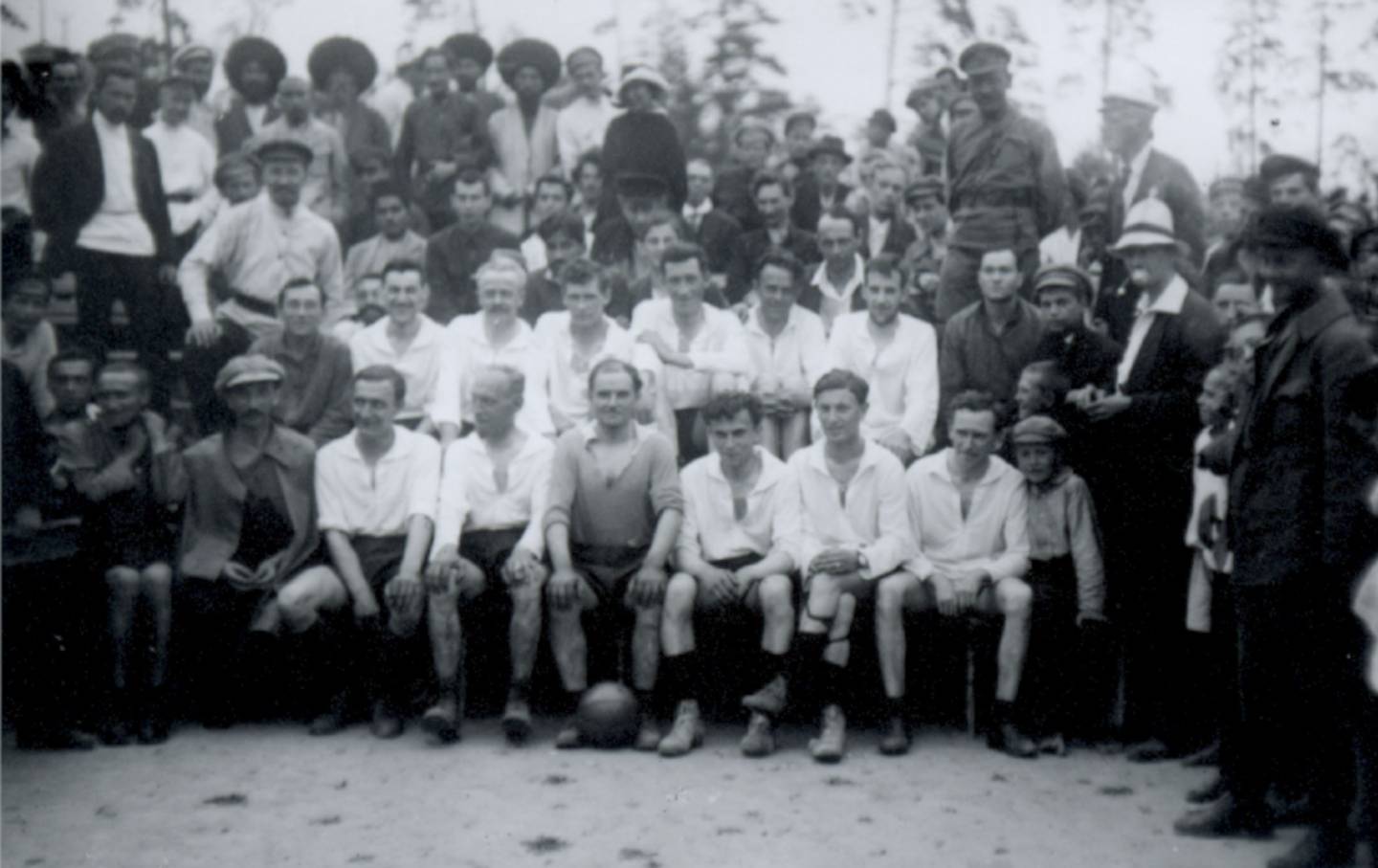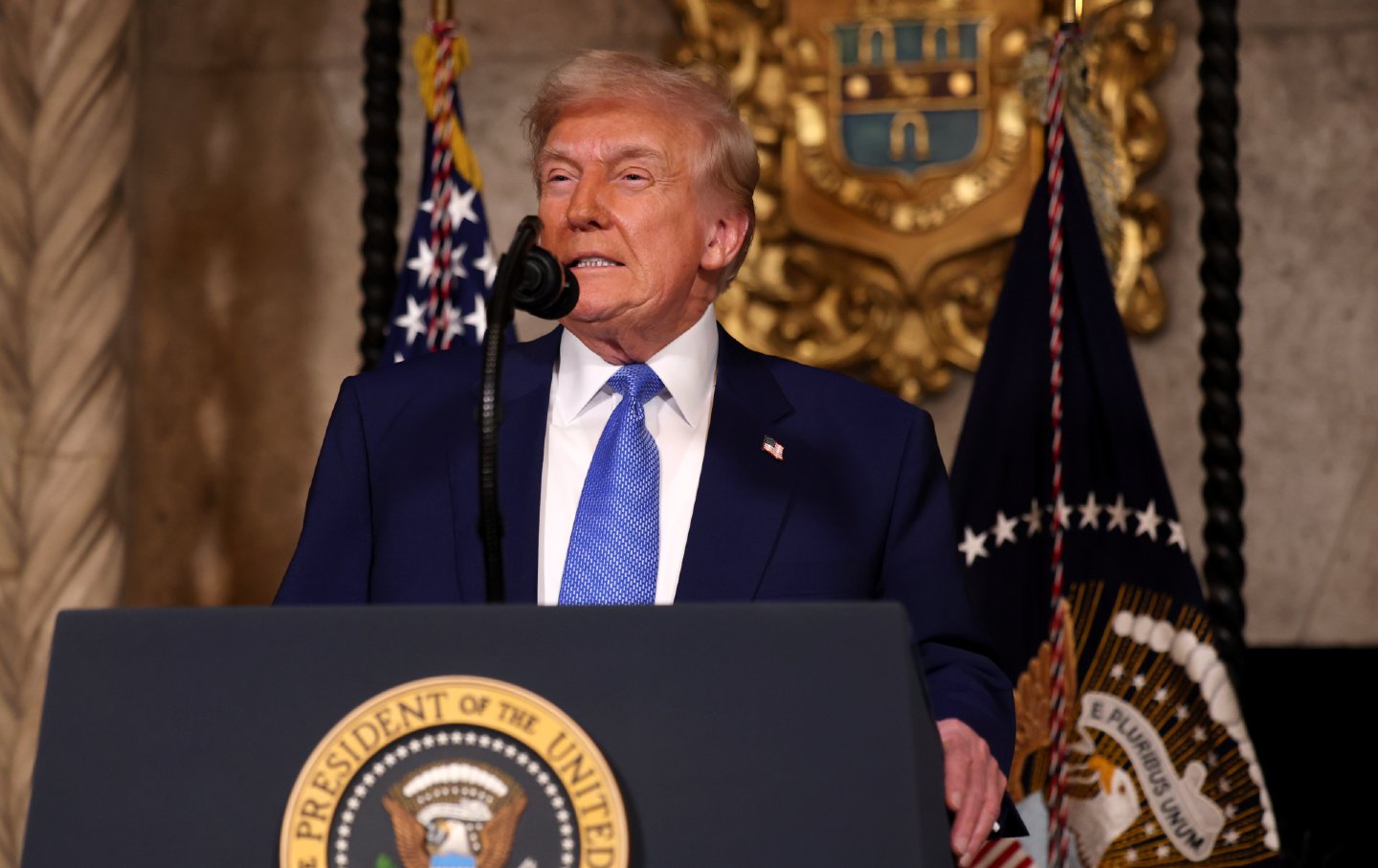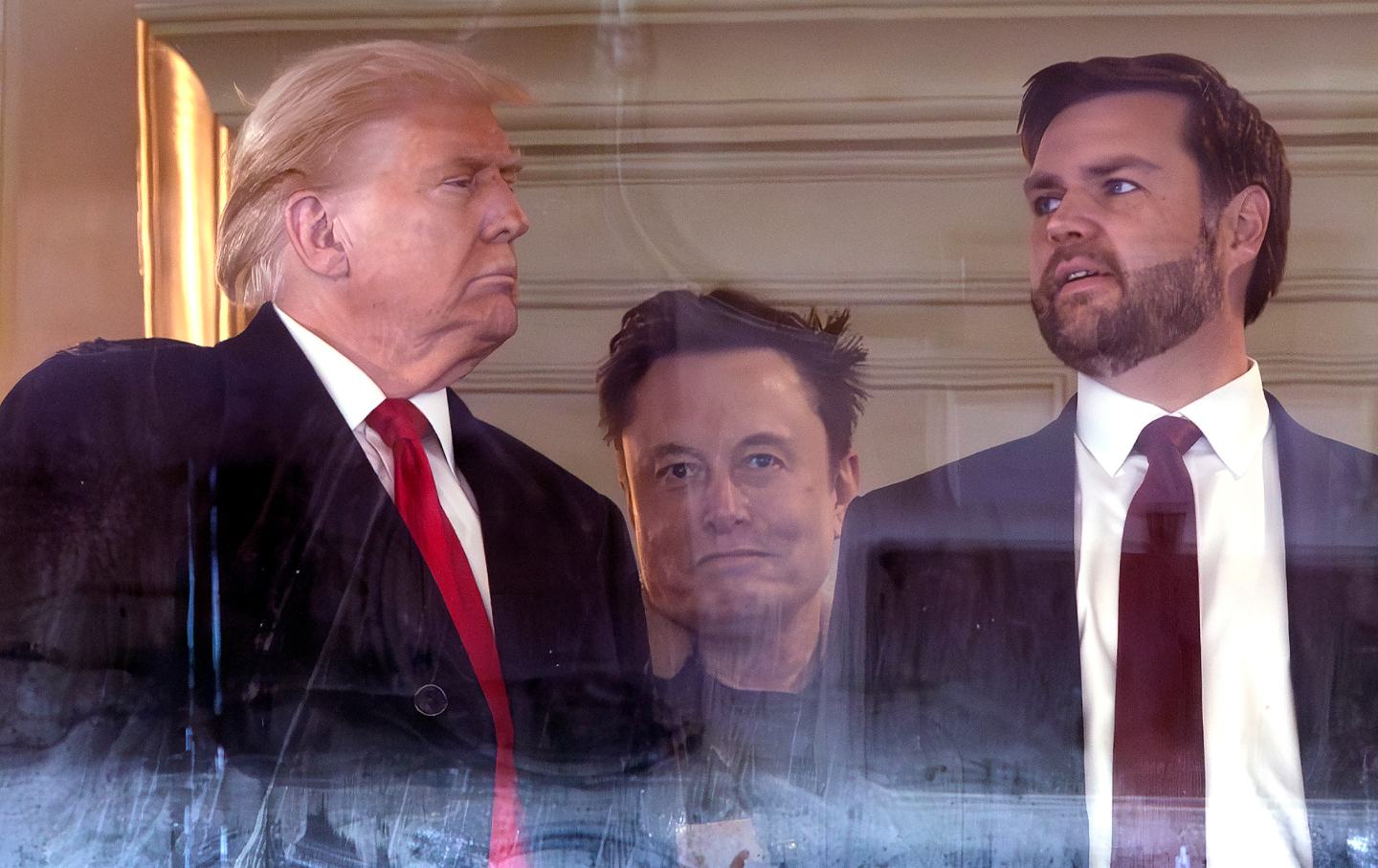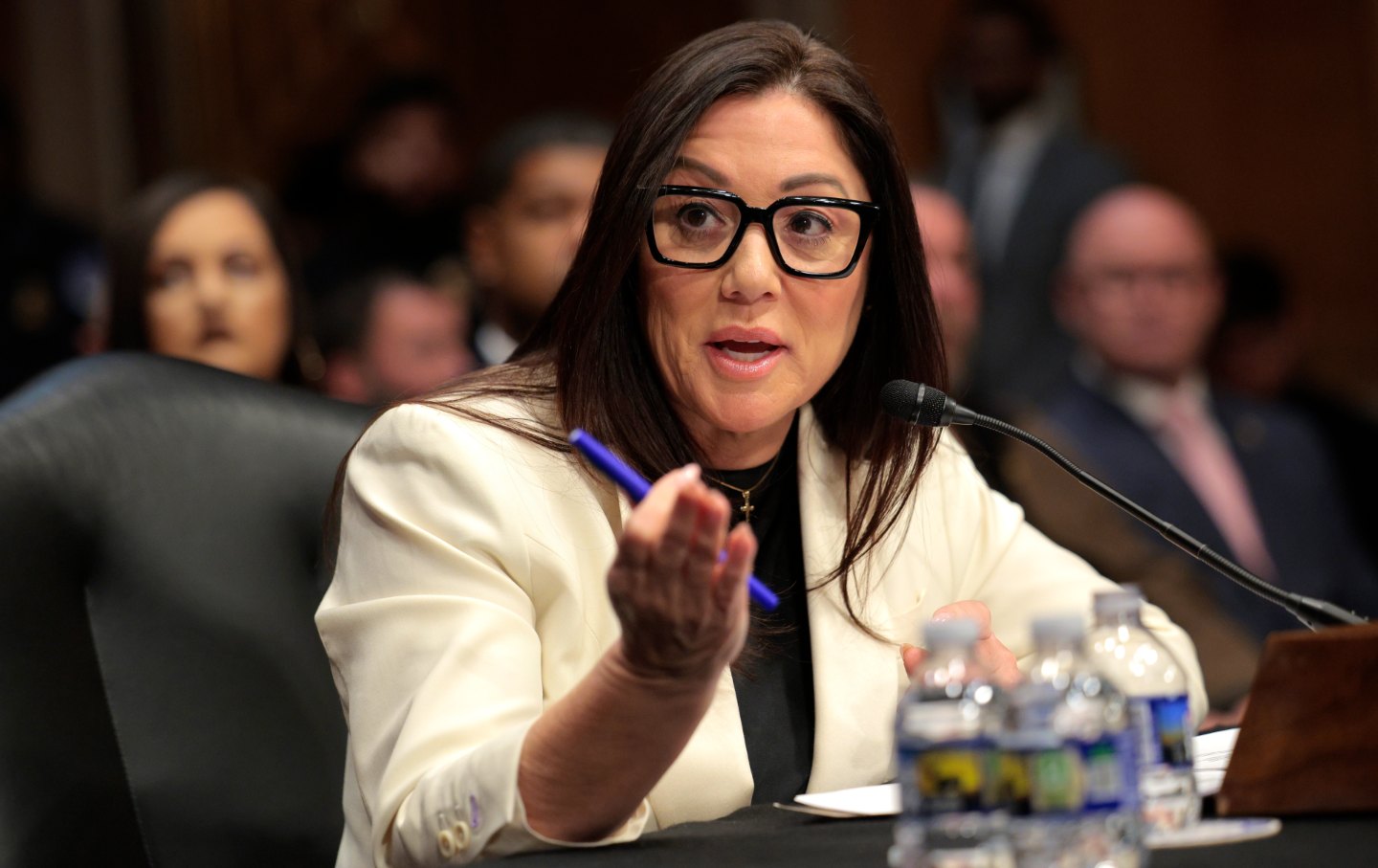The Lost Stories of the Communist International
The focus of Brigitte Studer’s Travellers of the World Revolution is not the leadership and changing politics of the Comintern but the history of its rank and file.

A soccer team consisting of members of the Communist International in Moscow, Russia, 1921
(Laski Diffusion/Getty Images)
In 1925, the radical Indian nationalist M.N. Roy complained that the British authorities had “pursued me step by step, from one country to another, from Java to Japan, from China to the Philippines, to America, to Mexico and through most of the countries of Europe.” Born near Calcutta in 1887, Roy had been forced to flee India in 1915 due to his activism in the Swadeshi pro-independence movement. But his departure from the subcontinent was just the beginning of an itinerant life that took him across much of the world in the tumultuous decades between the two world wars—and his displacements were not just caused by the British. In the course of his travels, Roy became an active member and organizer with the Communist International.
Founded in 1919, the Comintern, or Third International, was the Bolsheviks’ response to the disintegration of socialist internationalism during the First World War. Amid the mass and mutual slaughter, most of Europe’s socialist and social democratic parties had aligned with their respective national governments. After the 1917 Revolution, Lenin sought to rebuild cross-border proletarian solidarity on a new foundation. The Comintern would be a single, global communist movement—not a loose alliance of like-minded parties, but rather a more tightly disciplined organization modeled on the Bolshevik Party itself, and with Moscow as its headquarters.
Technically, from 1919 until the Comintern’s dissolution in 1943, each national Communist Party was merely a “section” of this overarching world party. But by the late 1920s, in parallel with Stalin’s growing dominance of the Soviet state, it became an increasingly hierarchical organization, with instructions handed down to parties across the world from on high. By the time the Second World War broke out, the Comintern had been largely subordinated to the priorities of the Soviet state. Even so, in the 24-year interval between its founding and its demise, it served as an important lodestar of world revolution, shaping the lives of thousands and engaging the sympathies of many more.
Histories of the Comintern have tended to focus on questions of strategy, tracking successive shifts in the organization’s stance over the 1920s and ’30s, often with the ultimate goal of explaining its missteps and failures as a result of its increasing dogmatism and subordination to Soviet interests. C.L.R. James produced a trenchant critical analysis in this vein as early as 1936; Fernando Claudín and E.H. Carr offered more retrospective but similarly critical portraits in the 1970s and ’80s. Alongside these overall accounts, a significant literature also developed on the relations between Moscow and various national parties. In each case, the party attempted to carve out some room for maneuver as the contradictions between Comintern policies and local realities began to mount.
Brigitte Studer’s Travellers of the World Revolution takes a different tack, focusing on the men and women who worked for the Comintern itself. Drawing on documents from the Comintern archives as well as memoirs, letters, photographs, and secondary sources, the book provides a wealth of insights into the peripatetic lives and profound political commitments of dozens of individuals. As well as reconstructing their day-to-day existence, their ideas, and their actions, Studer also firmly locates these individuals as they move from one political context to the next—from Moscow to Berlin, Paris to Wuhan, Zurich to Barcelona. More than a collective biography or an institutional history from the inside, Travellers offers what might be called embodied radical history, showing how a particular set of people navigated these turbulent years, and what it meant for each of them to try to change the tides.
Born in Switzerland in 1955, Studer is the author of many previous books. She has written on the struggle for women’s suffrage, on the post-1968 feminist movement, on gender history, on Swiss nationality law, and on the Swiss Communist Party, among many other subjects. Fittingly, it was her interest in Rosa Grimm, one of the Swiss party’s founders, that led her to study the lives of Comintern militants. Her multilingual skills proved to be particularly useful for the task, since she could work with sources in German, French, Russian, and Italian. So too did the opening up of the Comintern archives, allowing her to produce a history rooted in meticulous archival work.
Studer has already written one book on the Comintern drawing on this research. In 2015, she published The Transnational World of the Cominternians, which deftly reconstructed the workings of the Comintern’s Moscow apparatus and examined its growth from semi-improvised meetings in smoky rooms to a formidable bureaucracy. Prominent Bolsheviks such as Lenin, Trotsky, Nikolai Bukharin, and Grigory Zinoviev were closely involved in the Comintern’s deliberations through the 1920s, even if the day-to-day work of running the organization was done by an international staff of professional organizers—those employed at various times included Antonio Gramsci and Ho Chi Minh—and a bevy of translators and stenographers.
Now, in Travellers, Studer builds on her earlier scholarship while extending it geographically from the Comintern’s base in Moscow to follow the people it dispatched to all points of the compass. As Roy’s 1925 complaint suggests, the work of Comintern organizers had to be done clandestinely to avoid the attention of the police and security services, making the life of its envoys necessarily precarious and secretive. Roy himself adopted many identities as he tried to slip through the security agencies’ nets. One of the few occasions when he used his own name was upon returning to Moscow for a Comintern gathering in 1921. When asked to list his profession, he summed up a lifetime of struggle and uncertainty by simply writing the word “revolutionary.”
Studer’s canvas is densely populated with other agents of the Comintern who lived lives as footloose as Roy’s: She follows some 320 separate individuals in the book. But most of Travellers revolves around a smaller cluster of people and their journeys and fortunes. Some are better known than others: Roy and his American partner, Evelyn Trent; the Italian American photographer Tina Modotti, based in Mexico in the 1920s but working for the Comintern in Moscow and Spain in the ’30s; the American journalist Agnes Smedley, later renowned for her support for the Indian independence movement and the Chinese Revolution; Willi Münzenberg, the flamboyant German press impresario; the secretive Mikhail Borodin, Comintern envoy to the Kuomintang in the early 1920s; and Vittorio Vidali, the Italian Communist widely rumored to have been involved in several murky plots, including the 1940 assassination of Trotsky. But Studer also weaves much of her narrative around lesser-known figures. HHilde Kramer, for example, was a translator and shorthand writer who, as a member of the German Communist Party (KPD), had taken part in the Bavarian Soviet Republic of 1918–19 and then fled to Moscow, where she worked in the Comintern apparatus. Margarete Buber-Neumann and her husband, Heinz Neumann, both KPD members, worked for the Comintern publication Inprekorr in 1920s Berlin before relocating to Moscow in the ’30s, as did the Hungarian Gyulá Alpári and the Countess Charlotte Stenbock-Fermor, a German speaker of Romanian origin. Babette Gross, Münzenberg’s partner, is another recurrent presence, along with the Swiss communists Jules and Jenny Humbert-Droz.
Studer follows these protagonists through a series of flash points, with chapters centered in more than a dozen cities across the world. The sequence itself reflects the Comintern’s evolving priorities. The book opens in Moscow in 1920 and tracks the construction of the Comintern’s central organization, initially chaired by Zinoviev. The scene then shifts to Baku, where later the same year the Bolsheviks organized a gathering of “Oppressed Peoples of the East”—an early sign of the party’s desire to appeal to the colonial world. Studer then moves on again to Tashkent, where Roy—who’d refused to attend the Baku gathering, dismissing it as “Zinoviev’s circus”—had been dispatched to make plans for a military expedition against the British in India. That never materialized, but during his stint in Central Asia, Roy became one of the founders of the Communist Party of India. (The year before, he had also been involved in starting the Spanish Communist Party and the Mexican Communist Party.)
As Studer points out, despite these sorties in the East, the bulk of the Comintern’s energies and budget in its first decade went to its activities in Europe. In the 1920s, Berlin became a major hub for international communism as well as a meeting point for radical intellectuals from across the globe. Paris also served as an important node in the Comintern’s network, and Brussels gained in prominence in 1927 by hosting the Congress Against Colonial Oppression and Imperialism. Attended by sizable delegations from India, China, and Latin America, as well as by anti-colonial activists from British and French colonies in Africa and the Middle East, the congress resulted in the creation of a transnational organization that was communist-led but (initially, at least) ideologically diverse: the League Against Imperialism. Though the league lasted for only a decade, it crucially linked the communists’ critique of capitalism to the anti-colonial movements’ drive for independence—laying some of the political groundwork for the powerful connections between national liberation and socialism that developed after the Second World War.
The Comintern’s focus on Europe in this period reflected the Bolsheviks’ strategic thinking. Encircled by capitalist powers, the nascent Soviet state pinned its hopes on revolution spreading across Europe, with a defeated and destitute Germany seemingly the place most primed for working-class revolt. But the Comintern also began to direct more and more of its attention to China. Here, its strategy was premised on the notion that China had to overturn feudalism through a bourgeois revolution before it could carry out a proletarian one. In this schema, the nationalist Kuomintang was best placed to usher in the bourgeois stage, and in 1923 Moscow ordered the fledgling Chinese Communist Party to subordinate itself to its nationalist rival. Four years later, the KMT turned on its erstwhile allies, massacring thousands of communists and unleashing a “White Terror” that lasted several years.
The Comintern remained active in China in the 1930s, but Shanghai had become a perilous refuge for Asian and European communists. For those who could escape, flight to Moscow became the safest option. But in Moscow, too, the atmosphere was darkening. Studer quotes the Hungarian writer Ervin Sinkó, who spent two years in the USSR during this period: “I have noticed in the last few days here and there that people pronounce a name, and everyone raises their eyebrows: silently, but all the more significantly. I finally realized today what is going on. There are rumors, albeit so far unverifiable ones, of some kind of unusually large-scaled ‘purge.’” When the purges did come, their force fell on a wide range of groups: national minorities, intellectuals, “kulaks,” and the Bolshevik Party itself—but also many Comintern personnel.
The onset of Stalinism’s fevered paranoias coincided, paradoxically, with the Comintern’s switch to the Popular Front strategy. From 1935 onward, the various Communist parties abroad began seeking out alliances with social democrats, socialists, and others in a belated attempt to combat the rise of fascism. Germany had already fallen to the Nazis, but with the outbreak of the Spanish Civil War in 1936, a new battlefront appeared—and it was one for which many Comintern staff volunteered. Studer describes the war in Spain as the Comintern’s “last and most significant major operation,” adding that “every party and every affiliated organization mobilized” to provide money, food, and medical supplies, as well as doctors, nurses, and fighters for the International Brigades. She describes in detail the efforts to coordinate this flow of aid, which was driven above all by solidarity from below. But at the same time, the Comintern tried to exert a more top-down influence through envoys sent from Moscow to advise the Republican government. Studer reconstructs the spiral of infighting and mutual suspicion that undermined these efforts. Stalin’s secret police were also active in Spain, their covert agenda wreaking havoc on the cause they were supposedly sent to aid.
The defeat of the Spanish Republic was a tragedy for the world’s left. It also brought devastation to the Comintern’s ranks. Studer records the toll: “Around a hundred Comintern officials died on the battlefield or in the Francoist repression that followed.” She also notes that for many militants, Spain was only a single step in a longer process of political disillusionment and betrayal. “Many of those who survived lost their belief in the Communist cause,” she writes, “while many of those who returned to the Soviet Union would fall victim to Stalin’s purges.” The somber tone carries over into the book’s concluding chapter, where Studer observes that fully a third of her 300-plus “travellers of the world revolution” died violent deaths. Many more survived, of course, and went on to disparate careers—some remaining party militants, others becoming staunch anti-communists, while others still turned away from political commitments altogether. But the grim final chapter of her book drives home the point that for many who devoted their lives to the Comintern, things did not end well.
Studer’s use of so many personal accounts opens up a window on the daily lives of these militants—their tense and difficult working conditions, their precarious living situations, as well as their tempestuous romantic lives and, in many cases, their eventual disillusionment. The details are often resonant: In a wintry Tashkent in 1920, Roy and his staff slept under “piles of thick woollen carpets,” and by day “congregated in the basement to sit around the kitchen stove.” Provisions left much to be desired: “The pièce de résistance of each meal was rice or kasha (a dark brown coarse grain) cooked in rancid mutton fat with some lumps of meat. Brightened up with tiny bits of carrots, the evil smelling and ugly looking thing was called ‘pilaf.’” There are also moments of comedy as revolutionaries from comfortable backgrounds encountered more spartan conditions, such as when Jules Humbert-Droz arrived in Berlin in 1927 to take charge of the Comintern’s West European bureau and found the morning coffee that his landlady provided to be “unspeakable.”
Popular
“swipe left below to view more authors”Swipe →In excavating these details of their day-to-day lives, Studer does much more than merely satisfy a historical curiosity: She both makes a methodological wager and advances three major arguments about the kind of histories of communism that have been told to date. First, in telling the story of the Comintern through its militants, Studer highlights the importance of lived experience to any understanding of their militancy. While many previous works have explored the Communist Party’s political debates and decision-making processes, few have given us a concrete sense of what it meant to be part of a transnational communist movement—what political engagement actually looked like, what kinds of sacrifices and joys it entailed. By doing so, Studer also restores some sense of agency to hundreds of individuals who, when they are not overlooked altogether, are often retrospectively dismissed en masse as the dupes or tools of Stalinism. As she explains, the history of communism, “almost more than any other history, is prone to the temptation to explain things from the end backwards.”
Second, Studer makes another key intervention simply by having so many of her central protagonists be women. In the 1920s and ’30s, the overwhelming majority of leading political roles—not just in the communist movement but across the spectrum—were occupied by men. In spite of its commitment to women’s liberation, the Comintern tended to replicate the gendered divisions of labor typical of the time: Women were often relegated to the auxiliary roles of secretaries, stenographers, or translators. Without them, of course, the organization itself would not have been able to function, and Studer is at pains to point out the crucial contributions they made behind the scenes—within the Comintern apparatus, but also as comrades, partners, or spouses to operatives in the field. That these contributions have been so neglected to date may not be surprising, but Studer does draw some overdue attention to a glaring blind spot in the previous scholarship.
Finally, in tracing the globe-spanning itineraries of so many militants, Travellers steps confidently across the bounds of several national historiographies. Given the transnational nature of the communist movement itself, this might seem to be an obvious move. But in practice, it is a tall order to match the scale and reach of this sprawling organization, and relatively few histories of 20th-century communism have attempted it—and certainly none on the scale that Studer has. That alone makes her book a formidable achievement and, at the same time, an energizing challenge. Its subtitle bills it as “a global history of the Communist International”—not “the global history.” Despite its impressive geographical scope, some parts of the world with significant communist histories are largely missing—Latin America, Southeast Asia, the Middle East, Africa—but to observe this is in no sense a criticism. Instead, it is an indication of how many more rich stories and complex itineraries remain to be uncovered. M.N. Roy’s globe-trotting life, for example, took him to a string of countries that developed their own vibrant communist movements, many of whose rank-and-file militants undertook their own odysseys and exiles in the name of class struggle. These journeys were not incidental to their communist politics, but rather an integral part of it. Tracing these connections across national boundaries and beyond nationalized histories allows us to see more clearly the freewheeling internationalism that was woven into the history of communism, and how it shaped the efforts of so many men and women to remake the world.
More from The Nation

This Executive Order Reveals the Trump-Musk Endgame This Executive Order Reveals the Trump-Musk Endgame
A recent order aimed at destroying independent regulatory agencies isn’t just about taking control of the state—it’s a giant cash-grab in disguise.

Trump’s Plan Is to Flood the Zone With Garbage Trump’s Plan Is to Flood the Zone With Garbage
All of it is meant to disorient and overwhelm us. The question is: How are we to navigate all that excrement?

Trump Is Unpopular—and So Are the Do-Nothing Democrats Trump Is Unpopular—and So Are the Do-Nothing Democrats
The president is increasingly hated, but so is an opposition party that fails to oppose.

Trump’s Labor Secretary Pick Turns Out to Be Super Anti-Labor Trump’s Labor Secretary Pick Turns Out to Be Super Anti-Labor
Surprise, surprise: Former representative Lori Chavez-DeRemer supports anti-union “right to work” laws and rejects a national minimum-wage hike.




